How machine learning is revolutionising materials science
Research in materials science and engineering is crucial for developing materials that can help solve some of society’s biggest challenges. In recent years, the field has begun to harness the potential of machine learning, which is massively increasing our understanding of materials’ properties, and how we can discover and design new materials. Professor Dane Morgan and Dr Ryan Jacobs from the University of Wisconsin-Madison in the US are investigating the opportunities and challenges this advancement poses.
TALK LIKE A MATERIALS SCIENTIST AND ENGINEER
Artificial intelligence (AI) — computer systems able to perform tasks normally requiring human intelligence
Compound — a mixture of two or more elements
Machine learning (ML) — computer systems able to learn and adapt without following specific instruction
Materials science and engineering (MS&E) — the study of materials’ compositions and properties, and developing materials to fulfil specific functions
Natural language processing (NLP) — computational techniques that can analyse and synthesise natural human language
Qualitative data — data that describe the attributes or properties of something
Quantitative data — data expressing a measurable property of something
Machine learning (ML) is a powerful emerging field involving programming computers that ‘learn’ as they go. A part of artificial intelligence, ML looks for patterns in existing datasets and uses the patterns it finds to make its own decisions or predictions. “Machine learning has undergone astonishing growth in its capabilities in the last couple of decades,” says Professor Dane Morgan, of the University of Wisconsin-Madison’s College of Engineering. “These new capabilities are impacting almost all aspects of life and the study of materials is no exception. Now, the challenge is for the field to figure out how to use it most effectively.”
Dane and his colleague Dr Ryan Jacobs are focusing on understanding ML’s capabilities and exploring how they can be harnessed within materials science and engineering (MS&E). MS&E involves the study of materials’ properties and the creation of new materials for specific purposes based on these relationships. “The use of ML in MS&E is in its early stages but evolving rapidly,” says Ryan. “We’ve seen its power in other fields – for instance, beating the world’s best professional chess or poker players, and enabling potentially transformative technologies such as autonomous vehicles – and it’s clear that ML is driving advancements in science and technology.”
A digital abundance
All areas of science have benefited from the rise of computation and the internet. “We now have easy access to papers and data, including massive digital databases that compile the structure and properties of countless compounds,” says Dane. “This is coupled with powerful computing and modelling capabilities that make it far easier to explore and predict complex relationships between materials’ structure, composition and their properties.”
The majority of this computing power comes from open-source software. “The fundamental ML algorithms are available to everyone for free,” says Dane. “This includes tools made by large corporations such as Facebook and Google, as well as packages made by other MS&E researchers.” This accessibility removes barriers and promotes exploration and development of further tools and discoveries.
Hidden correlations
ML is especially adept at finding patterns in huge datasets that would be impossible for humans to notice. “ML can identify incredibly complex relationships between materials’ structure, properties and performance,” says Ryan. “It extracts information from data to form links between a material’s composition (the types and quantities of elements it contains) and structure (positions of atoms in space) to particular properties or functions.” Dane gives the example of how the brittleness of steel, when exposed to certain conditions, is affected by the type and distribution of atoms within its structure. ML can be used to deeply assess these relationships, which is extremely useful for selecting a type of steel that will perform sufficiently in important roles – within a nuclear reactor, for instance.
As well as testing existing materials, these relationships can also be extended by using ML to predict structure-property-performance relationships in currently non-existent materials. “Molecular-scale simulations are routinely used to understand predicted properties prior to real-world experiments and are a key part of the discovery and design process,” says Ryan. “ML can learn how atoms in a material interact with one another based on existing data and uses this knowledge to calculate the properties of novel materials.” For example, ML is being used to discover which materials can be used to make solar panels as efficiently as possible, by predicting how structural changes to a solar cell absorber material affect its ability to convert sunlight into electricity.
Natural language processing
Though much existing MS&E data is quantitative – based on numbers that can be relatively easily compared – a lot of data is qualitative, which is more challenging to compare or even come across in the first place, given the vast number of existing MS&E research papers in existence. “ML is emerging as an effective means of data collection through natural language processing (NLP),” says Ryan. “Manually searching existing papers for relevant knowledge is massively time consuming, but NLP methods can extract information far more rapidly.” NLP involves using ML techniques to enable computers to learn the different ways that qualitative data might be presented in scientific papers – for instance, a preparation technique might say “the mixture is rapidly stirred” – and bring this data together into a format that can be used by scientists.
As such technologies become increasingly powerful, there is a growing need for MS&E researchers to adapt to use them effectively. “The new abilities of ML to understand language and make complex connections are still not widely used in MS&E,” says Dane. “There is a need to integrate the tools of ML into our existing workflows, to make our research faster, better and more cost-effective.”
Computer vision
Much of MS&E characterisation data is in the form of images. “In recent years, the scale and complexity of electron microscopy data has increased exponentially, driven in part by improved detector technology,” says Ryan. Researchers are often interested in determining which phases are present in a micrograph, or finding individual objects in an image, such as missing atoms or extended defects like dislocation loops or voids. Large, complex datasets necessitate the use of ML computer vision methods to automate this approach.
Computer vision ML algorithms encode the complex relationships present in images – like contrast changes or the presence of edges around an object – enabling the algorithm to ‘learn’ what a particular microstructure or defect may look like. “Once properly trained, we have found that computer vision methods can detect objects in images with about the same efficacy as human experts, but in a fraction of the time,” says Ryan.
The robot age
Like all scientific fields, MS&E inevitably includes tedious and time-consuming tasks, such as mixing hundreds of combinations of different elements to test their properties. Increasingly, robots are being developed that can perform these tasks, saving researchers a lot of time, effort and human and financial capital. “Entire autonomous laboratories are being developed that can make and characterise multitudes of materials with almost no human intervention, allowing rapid exploration of properties,” says Dane. “ML is excellent at performing the decision-making involved in this process, choosing which materials to explore and in what order, based on the data it receives as the experiments progress.”
Dane predicts the rise of such autonomous laboratories could fundamentally change the nature of MS&E. “As ML and robotics become cheaper and more effective, researchers will focus more on building and refining the autonomous environments, and less on the detailed experiments and calculations themselves,” he says. “This will change what skills MS&E researchers need.”
Ryan is enthusiastic about this changing nature of MS&E and science as a whole. “I am excited by the prospect that ML will become mature enough to be coupled with nearly every research task,” says Ryan. “I believe that each step of the scientific process, from hypothesis generation, extraction of existing knowledge from the literature, planning and running experiments and simulations, and analysing results will be aided by ML. This human-machine relationship will likely enable research to progress at a rate and precision that is presently unobtainable.”
Reference
https://doi.org/10.33424/FUTURUM377
“Machine learning can identify incredibly complex relationships between materials’ structure, properties and performance,” says Ryan. © WrightStudio / stock.adobe.com
All areas of science have benefited from the rise of computation and the internet.
© nobeastsofierce / stock.adobe.com
© nevodka.com/stock.adobe.com
 PROFESSOR DANE MORGAN
PROFESSOR DANE MORGAN
Harvey D. Spangler Professor of Engineering
DR RYAN JACOBS
Research Staff Scientist
Computational Materials, Department of Materials Science and Engineering, College of Engineering, University of Wisconsin-Madison, USA
Field of research: Materials Science and Engineering (MS&E)
Research project: Investigating the opportunities and challenges for machine learning in the field of MS&E
Funders: US National Science Foundation (NSF), US Department of Energy (DOE), US Army Research Lab, Defense Advanced Research Projects Agency (DARPA)
ABOUT MATERIALS SCIENCE AND ENGINEERING
MS&E is an ever-growing field that is increasingly taking advantage of increased computational power and other opportunities. Dane and Ryan explain more about what they love about their line of work.
“Materials matter,” says Dane. “They’re at the core of most major advanced technologies. Examples are everywhere – the solar cells helping us move away from fossil fuels, the nanoscale transistors running your computers, your clothes that don’t wrinkle.”
“The development of new materials is at the forefront of solving our most pressing societal problems,” says Ryan. “I find it very rewarding to see research done by materials scientists having a positive impact and pushing us collectively forward as a species.”
“MS&E has a wonderful combination of deep fundamental problems, but also a strong connection to the real world,” says Dane. “For me, I find it a great place to bring my love of scientific thinking together with practical applications to make a difference to the world.”
“Future generations will be interacting with data at a scale and breadth that was never available to their predecessors,” says Ryan. “Additionally, new scientists will be involved in cross-cutting modes of research integrating theory, computation and experiment at large scales.”
“MS&E is a rapidly growing field with amazing opportunities,” says Dane. “Now we can see and arrange individual atoms, predict atomic behaviour through simulations and integrate these methods with advanced AI to analyse data, predict behaviour and guide discovery far more rapidly than human brains could ever do. We can expect new breakthroughs in so many areas.”
Explore careers in materials science and engineering
• Dane recommends looking into the Materials Research Society, which offers talks, activities and exposure to possible career paths in the field.
• Dane and Ryan’s department has a number of outreach opportunities and events, including the Teen Science Cafe, research experiences and participation in science festivals.
• Informatics Skunkworks engages STEM undergraduates in practical and team-based scientific skills based on informatics such as ML. Dane and Ryan are part of the group and say it is helping future MS&E researchers gain the skills needed to work at the interface of ML, science and engineering.
Pathway from school to materials science and engineering
• Ryan suggests physics and chemistry as the subjects most relevant for MS&E. He also recommends learning programming languages such as Python.
• Dane notes that there are few undergraduate courses specific to MS&E but says that as well as materials science, courses in mechanical engineering, chemical engineering, chemistry or physics are often relevant.
• For the growing ML aspects of the field, backgrounds in computing, coding and mathematics are helpful.
How did Dane become a materials scientist and engineer?
My father taught science and mathematics, and our house was full of science books. My mother was an English professor and telecommunications consultant and was deeply knowledgeable, too. They instilled in me a belief that science is a grand thing to be a part of, and I still agree. I also read a lot of comic books as a kid and always wanted superpowers – science is the closest thing to superpowers and magic, in my opinion!
My life as a scientist has been shaped by a hundred small moments. I remember reading Isaac Asimov and Steven Weinberg as a kid and being amazed by the immensity of their understanding. I had great arguments about mathematical proofs with my amazing grade school maths teachers and was a regular at Boston’s science museum. Many incredible teachers, friends and mentors along the way have been essential.
You don’t have to do science like other people do it. Some people might be great problem solvers, others great team builders, or others have a strong vision of potential outcomes. Personally, two things have helped my career enormously. Being interested in science and learning about it outside of standard schooling has helped me find academic success. Surrounding myself with great scientists and other talented people has exposed me to a range of approaches and examples, shaping me in the process.
In the future, I would love to discover a new material that has a significant impact on human welfare – maybe a better fuel cell or a stronger steel. I also aim to share what wisdom I have on how to approach science and use it to bring positive change. I hope to engage as many bright young people as I can in joining this vision.
Dane’s top tips
1. Do a lot of science stuff outside of school. Make sure you are gaining the skills of technical thinking and practice.
2. Talk to people about their career paths, and make sure you understand the options available to you throughout your development – such as camps, competitions, programmes and career opportunities.
3. Figure out what you love and pursue it. We add so much more to the world when we believe in what we do.
How did Ryan become a materials scientist and engineer?
I was fascinated by planets and outer space when growing up. I remember checking out a book for each planet from my elementary school’s library at once! While not explicitly tied to MS&E, such wonder for nature is important for scientists. We are often concerned with discovering and understanding the mysteries of the natural world.
I come from a long line of engineers and decided to keep up the trend. I was also inspired by well-known science communicators such as Carl Sagan, drawn by his talent for instilling scientific wonder in young minds.
Great instructors in college really drove home my passion for science and MS&E, in particular. My college undergraduate advisor pushed me to consider graduate school, which I hadn’t really considered previously. The combination of interest in a subject with the support of a mentor was influential in shaping me as a scientist.
Determination and teamwork have helped make me successful. Failure is an unavoidable part of science, so having the determination to keep trying new things, creatively attacking a problem from new angles, and letting others help you are all essential. Science is highly collaborative, so surrounding yourself with good people with similar values will help aid your success.
In the future, I would like to branch out from the technical communication of science in peer-reviewed journals and try my hand at writing accessibly about MS&E for the broader public.
Ryan’s top tips
1. Keep an open mind regarding your interests and goals. As you meet new people and are exposed to new things, you may become interested in things previously unknown.
2. Stay curious! Maintaining a sense of curiosity and asking questions will lead you to interesting, rewarding outcomes. There is so much we don’t understand about the universe that is waiting to be discovered.
Do you have a question for Dane or Ryan?
Write it in the comments box below and Dane or Ryan will get back to you. (Remember, researchers are very busy people, so you may have to wait a few days.)

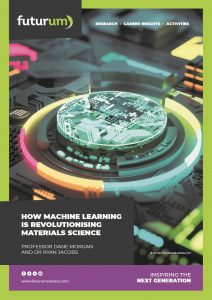
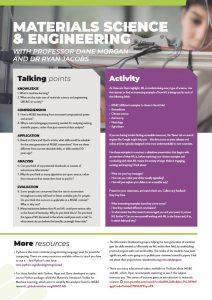
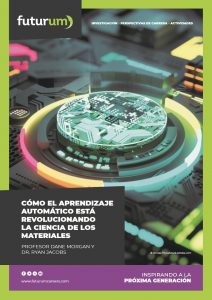
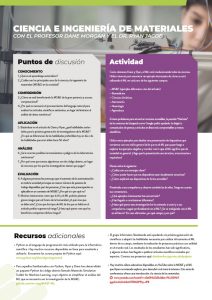

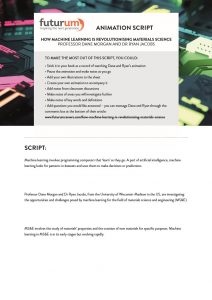



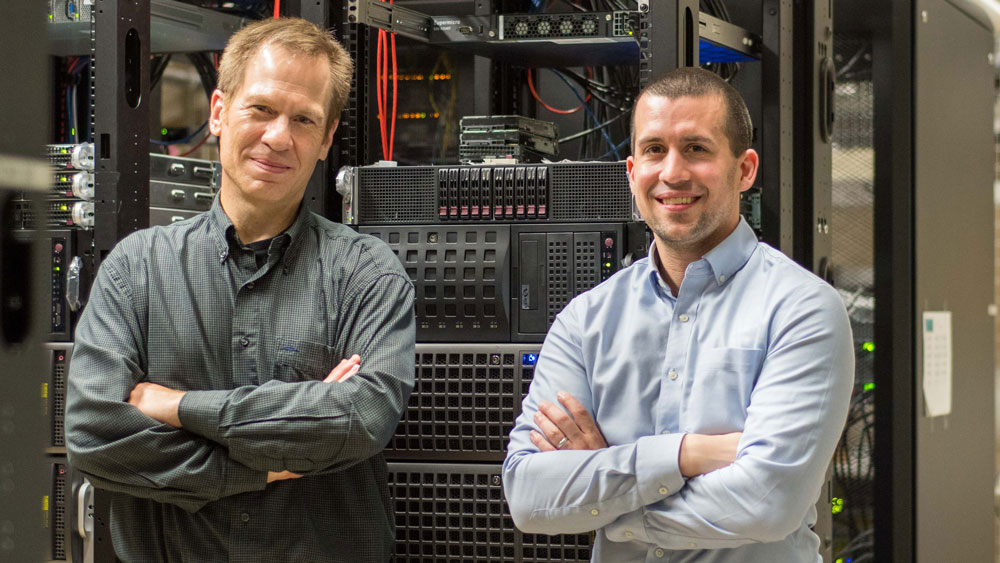


Hello Sir,
I hope that you are doing well. So, during my research about how we can use Machine learning in Materials Sciences, I found your name. I am Currently a student at the African Institute For Mathematical Science Where I discover Machine learning, and to day is one year that I Obtained a Master in Material Science. I am Interesting by what you do and I will like to work with you.
Thank you for your interest in our work and machine learning in materials. I will follow up separately on possible collaborations.